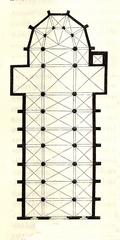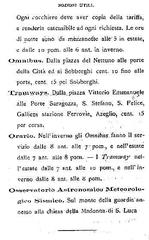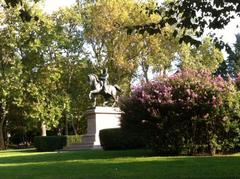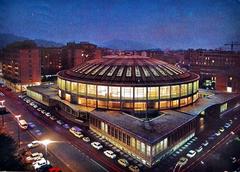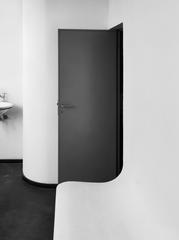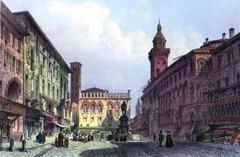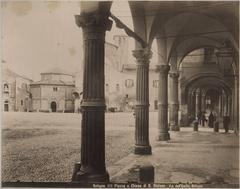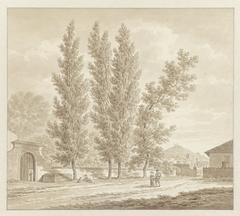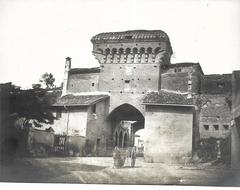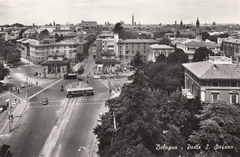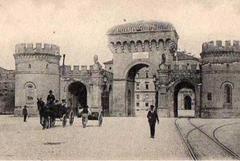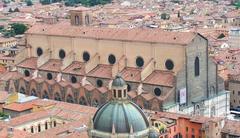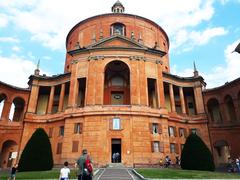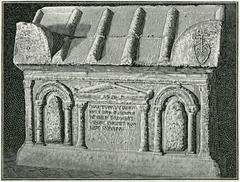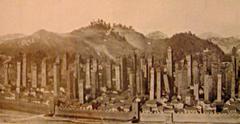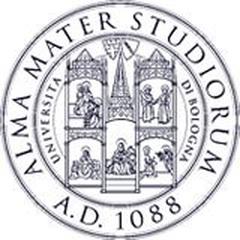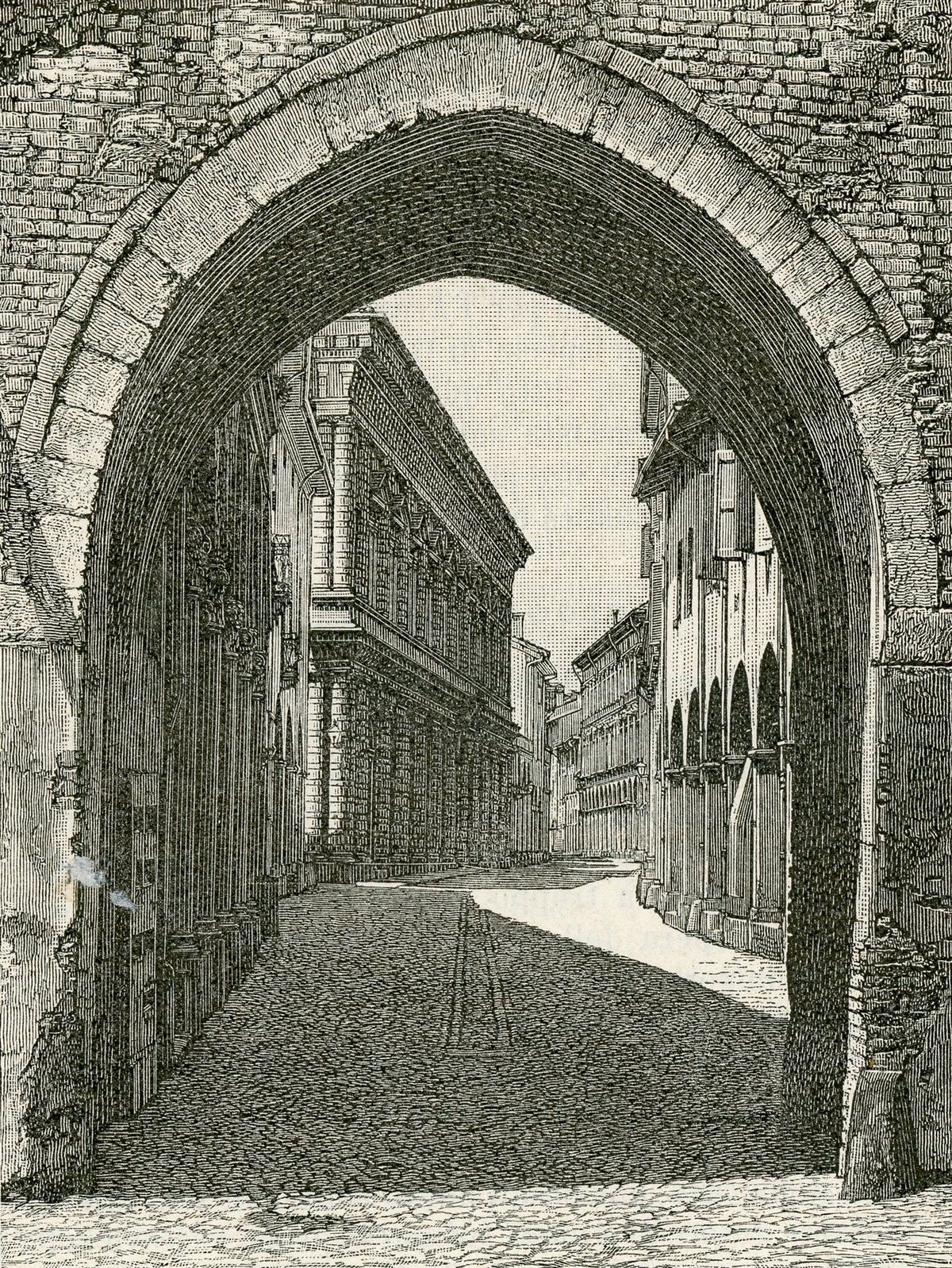
Porta San Vitale: History, Visitor Information, and Travel Tips
Published Date: 23/07/2024
Overview of Porta San Vitale and Its Significance
Porta San Vitale is an architectural gem and a crucial historical landmark in Bologna, Italy. Constructed in 1286, this ancient gate is one of the twelve that once fortified the medieval city. Porta San Vitale’s significance lies not only in its robust Gothic architecture but also in its historical roles, including strategic defense and facilitating trade and communication. Named after the nearby Church of San Vitale e Agricola, the gate has witnessed Bologna’s transformation from a medieval stronghold to a modern city. Today, it stands as a testament to Bologna’s rich cultural heritage, drawing history enthusiasts and casual travelers alike (Bologna Welcome, Architettura Medievale, Storia di Bologna).
Contents
- Introduction
- History of Porta San Vitale
- Visitor Information
- Travel Tips and Nearby Attractions
- Special Events and Cultural Impact
- Preservation Efforts
- FAQ
- Conclusion and Call to Action
Introduction
Porta San Vitale is more than just an ancient gate; it is a window into Bologna’s rich medieval past. This remarkable structure, one of the twelve gates of the medieval walls of Bologna, Italy, offers a captivating glimpse into the city’s history, architecture, and cultural significance. Whether you’re a history enthusiast or a casual traveler, exploring Porta San Vitale is a must when visiting Bologna.
History of Porta San Vitale
Origins and Early History
Porta San Vitale, constructed in 1286, was part of the third and final circle of walls built to protect Bologna. This period marked significant urban expansion and fortification, reflecting Bologna’s growing importance as a center of commerce and education. The gate was named after the nearby Church of San Vitale e Agricola, which has origins in the early Christian period (Bologna Welcome).
Architectural Significance
Porta San Vitale is an exemplary model of medieval military architecture. Its robust rectangular tower with crenellations, drawbridge, and portcullis reflects the Gothic influences prevalent during its construction. The gate’s design includes intricate stonework and pointed arches, characteristic of the time (Architettura Medievale).
Role in Bologna’s Defense
Strategically located on the eastern side of the city, Porta San Vitale controlled access to the road leading to Ravenna. It played a crucial role in the defense of Bologna, especially during conflicts such as the wars between the Guelphs and Ghibellines (Storia di Bologna).
Renaissance and Beyond
In the Renaissance period, Bologna underwent significant changes, and so did Porta San Vitale. The gate was modified to accommodate the increasing use of artillery, yet it retained much of its medieval character. Despite these changes, it continued to serve as a key entry point to the city (Renaissance Bologna).
Decline and Restoration
By the 19th century, the defensive walls of Bologna had lost their military significance. Many gates were demolished, but Porta San Vitale was spared. It underwent several restoration efforts to preserve its historical and architectural value (Restauro Bologna).
Visitor Information
- Visiting Hours: Porta San Vitale is accessible to the public 24/7, though certain areas may be restricted during restoration works.
- Tickets: There is no entrance fee to visit Porta San Vitale.
- Guided Tours: Available through local tourism offices. Check Tourism Bologna for details.
Travel Tips and Nearby Attractions
- Nearby Attractions: Visit the Church of San Vitale e Agricola, just a stone’s throw away. The University of Bologna and the Two Towers are also within walking distance.
- Photography Spots: Capture stunning views of Porta San Vitale from the eastern side, especially during sunrise or sunset.
Special Events and Cultural Impact
Porta San Vitale is a venue for various cultural events and exhibitions, further cementing its role as a cultural landmark in Bologna. It has been featured in numerous works of art and literature, highlighting its importance in the city’s history (Cultura Bologna).
Preservation Efforts
Local authorities and heritage organizations prioritize the preservation of Porta San Vitale. Regular maintenance and conservation work are carried out to protect the gate from environmental damage, supported by both public and private funding. Educational programs and guided tours raise awareness about the gate’s historical significance (Heritage Bologna).
FAQ
- What are the visiting hours for Porta San Vitale? Porta San Vitale is accessible 24/7, though some areas may be restricted during restorations.
- Is there an entrance fee to visit Porta San Vitale? No, visiting Porta San Vitale is free of charge.
- Are guided tours available? Yes, guided tours are available through local tourism offices.
Conclusion and Call to Action
Porta San Vitale is a testament to Bologna’s rich historical heritage. From its origins in the 13th century to its modern-day significance, the gate has witnessed and withstood the test of time. Visitors can experience a piece of medieval history and gain a deeper understanding of Bologna’s evolution by exploring Porta San Vitale. Download the Audiala app, check out related posts, and follow us on social media for more updates on Bologna’s historical sites.
Sources and Further Reading
- Bologna Welcome. Porta San Vitale. Retrieved from Bologna Welcome
- Architettura Medievale. Porta San Vitale Bologna. Retrieved from Architettura Medievale
- Storia di Bologna. Porta San Vitale. Retrieved from Storia di Bologna
- Renaissance Bologna. Porta San Vitale. Retrieved from Renaissance Bologna
- Restauro Bologna. Porta San Vitale. Retrieved from Restauro Bologna
- Tourism Bologna. Porta San Vitale. Retrieved from Tourism Bologna


